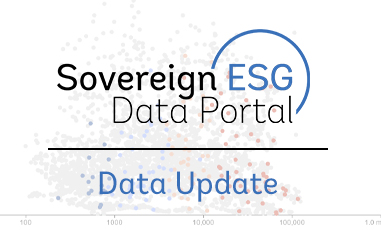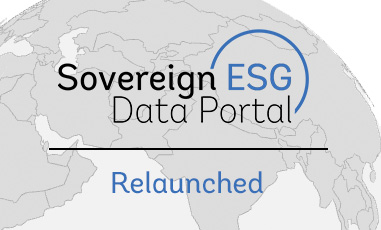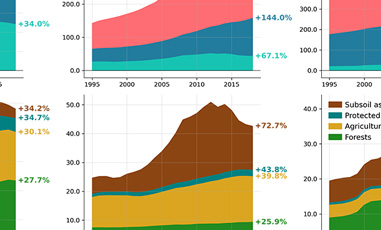
To reach the sustainable development goals, each country faces a unique set of challenges. For some, it may be about protecting its forest capital, while for others it may be about increasing food security or reducing extreme poverty. But while the circumstances of each country are unique, they are not alone in their effort. Often, it is useful to organize countries into peer groups, to visualize their development jointly and to identify role models that stand out. Environmental, Social and Governance (ESG) indicators, an investment framework that started in the corporate space and has since been applied to countries, help track sustainability metrics across many dimensions. The Sovereign ESG Data Portal was built as a one-stop shop for ESG-related indicators. The interactive indicator viewer in the portal makes it easy to create peer groups based on income, geography or climate and to track their developments over time.
The same geographic region
Selecting peer groups in the Sovereign ESG Data Portal is as easy as clicking a button. For example, we may want to look at the development of food production over time, but only for the group of Sub-Saharan African countries, where such an indicator is highly relevant. The interactive data viewer below shows the development of the food production index from 1960 to 2019 for all countries. This view is dominated by a few outlier countries and makes it difficult to discern how low income countries have fared. This is easily remedied by clicking on "Sub-Saharan Africa" on the right-hand side, which hides all other regions.
The data can also be nuanced and complex. For example, filtering by "North American" seems to show significant growth in the food production index. The trajectories look stronger than in the other regions. Upon closer inspection, Latin American countries reached higher levels of the food production index even though their pace lagged behind that of North America's. The ESG data portal should be used as a jumping off point for deeper analysis. These tools help the user ask interesting questions about development trends and get a high-level understanding before conducting additional analysis.
Open this view in the portal.Different indicators, different peer groups
The Sovereign ESG Data Portal also allows us to filter by income groups. For example, a commonly observed phenomenon is that the fertility rate begins to fall as countries grow in prosperity. Looking at the graph below, one can make out a blue-red gradient, which reflects the fertility rate range between low to high income countries. We can now cycle through the different income groups by selecting them on the right-hand panel under "Income groups". When selecting "High income", one can see that the fertility rate started low in 1960 and remained low until 2020. If we select "Lower middle income" instead, we can clearly discern a gradual reduction in the overall fertility rate.
Note: In the graph below, you can also explore other indicators by using the search field.
Open this view in the portal.Factoring in income
We can also explore the interplay between two indicators, such as per capita GDP and fertility rate in the graph below. Using the quadrants, we can see those with lower GDP and lower fertility rates – those that outperform relative to their resources. We can also see underperformers, those who have higher income but also higher fertility rate. These analyses allow us to have a more nuanced understanding of countries’ development paths and highlight countries that are unique compared to their peers. Move the timeline slider to the left or the right and see the interplay between fertility, income and the passage of time.
Open this view in the portal.As these examples show, we can use the Sovereign ESG Data Portal to look at many different sustainability indicators for countries. Leveraging the portal to filter along dimensions of income, region, and climate classification highlights their sustainable development peers and role models.











